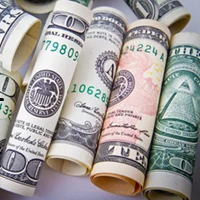Fostering financial literacy from an early age is a gift that keeps on giving. We'll explore the...
$10,000 Emergency Fund: How to Save & Where to Keep It
Why a $10,000 Emergency Fund is Essential and Where to Keep Yours
Life is full of surprises—some good, some not so much. Unexpected car repairs, medical bills, or even job loss can put serious stress on your finances. That’s why having an emergency fund is crucial. It acts as a financial safety net, ensuring you don’t have to rely on high-interest credit cards or loans when life throws you a curveball. But how much should you save, and where should you keep it? Let’s break it down.
How Much Should You Save in an Emergency Fund?
The general rule of thumb is to have three to six months’ worth of essential expenses set aside. This includes rent or mortgage payments, utilities, groceries, insurance, and any other necessary costs. If you have dependents or an irregular income, aiming for the higher end of that range is a smart move.
A popular milestone is a $10,000 emergency fund, which provides a strong financial cushion for many common emergencies. Even if setting aside that much money feels overwhelming, don’t let that discourage you. Start small—even $500 to $1,000 can make a difference in covering minor emergencies and preventing debt. The key is consistency. Setting up automatic transfers into your emergency fund each month can help it grow without much effort.
Why a High-Yield Savings Account is the Best Place for Your Emergency Fund
While it might be tempting to keep your emergency fund in a checking account for easy access, a high-yield savings account (HYSA) is a much better option. Here’s why:
- Higher Interest Rates – Traditional savings accounts offer minimal interest, while HYSAs can provide 10+ times the national average in interest earnings. This means your emergency fund grows over time.
- Liquidity Without Risk – Unlike stocks or other investments, an HYSA keeps your funds safe and instantly accessible when you need them.
- Separate from Everyday Spending – Keeping your emergency fund separate reduces the temptation to dip into it for non-emergencies.
Choosing the Right High-Yield Savings Account
Not all high-yield savings accounts are created equal. When selecting the best HYSA for your emergency fund, consider:
- Interest Rate – Look for competitive APYs (Annual Percentage Yields) to maximize your savings growth.
- No or Low Fees – Monthly fees can eat into your savings, so opt for an account with no maintenance fees.
- Easy Access – You should be able to withdraw funds quickly in an emergency without penalties.
- FDIC or NCUA Insurance – Ensure the account is insured up to $250,000, protecting your money.
Start Building Your $10,000 Emergency Fund Today
Financial security starts with preparation. Whether you’re starting with $50, $5,000, or working toward a $10,000 emergency fund, the most important step is to begin saving now. A high-yield savings account gives your emergency fund a safe home while helping it grow over time. If you don’t have one yet, explore some of the top-rated HYSAs and start securing your financial future today.
Need help finding the best high-yield savings accounts? Check out our top recommendations below and take the first step toward financial peace of mind!
-
Advertising Disclosure: We may earn a commission if you open an account with a featured company. Not all companies or offers are listed. Compare rates, fees, and terms before deciding.


